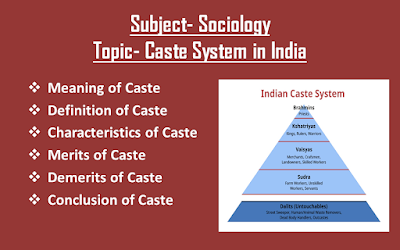Scheduled Caste- Meaning and Problems faced by the Scheduled Caste
# Meaning of Scheduled Caste
Scheduled caste are those caste/races in the country that suffer from extreme social, educational and economic backwardness arising out of age old practice of untouchability and certain others on account of lack of infrastructure facilities and geographical isolation, and who need special consideration for safeguarding their interests and for their accelerated socio-economic development.
Scheduled castes are those castes which were placed at the bottom in the traditional caste system. Usually, they used to perform unclean occupations. So they were treated as polluted and impure. The concept of polluted and impure made them untouchables.
Various names appears for them in literature dealing with scheduled caste. E.g., Shudras, das, chaandal, malechha, untouchables and harijans.
In modern literature, the scheduled castes are sometimes referred to as Dalit, meaning ‘broken’ or ‘dispersed’. This term has been popularized by B.R. Ambedkar. Ambedkar preferred the term Dalit to Gandhi’s term Harijan meaning ‘person of Hari/ Vishnu’ or ‘children of God’.
These communities were notified as scheduled caste as per provision contained in Clause 1 of Article 341 of the constitution.
# Problems faced by the Scheduled Caste
1. Social problems:- These problems pertained to the concept of purity and pollution. The untouchables were given a very low position in the society. The high caste Hindus maintained a social distance from them. They were denied many basic amenities of life which were according to the high caste Hindus. They were dependent on the tradition of Hindus for items of food and drink.
2. Religious problems:- These pertained to the denial of the right of entering temples which were exclusively served by the high caste Brahmans. The untouchables were neither allowed to enter the temples nor served by the Brahmins. They had no right to worship the Gods and Goddesses in the temple.
3. Economic problems:- They suffered from many economic problems. They had to face many economic hardships and they were not given proper reward for their service. Traditionally, untouchables were deprived of landed property of their own. They were not allowed to carry on any business. They were not permitted to engage themselves in the professions which were being carried out by the people of other castes. The untouchables were not free to choose any occupation according to their own ability. They had to clean the streets, remove dead cattle and to undertake heavy agriculture work. Mostly they were landless labourers. They worked in the field of high caste Hindus as labourers.
4. Public disabilities:- Harijans had to face many public indignities because they were denied the right to use the services of public utilities like wells, public transport as well as educational institutions.
5. Educational problems:- Traditionally, the untouchables were deprived of getting education. They were not allowed to use public educational institutions. Even today most of the illiterates are untouchables.





